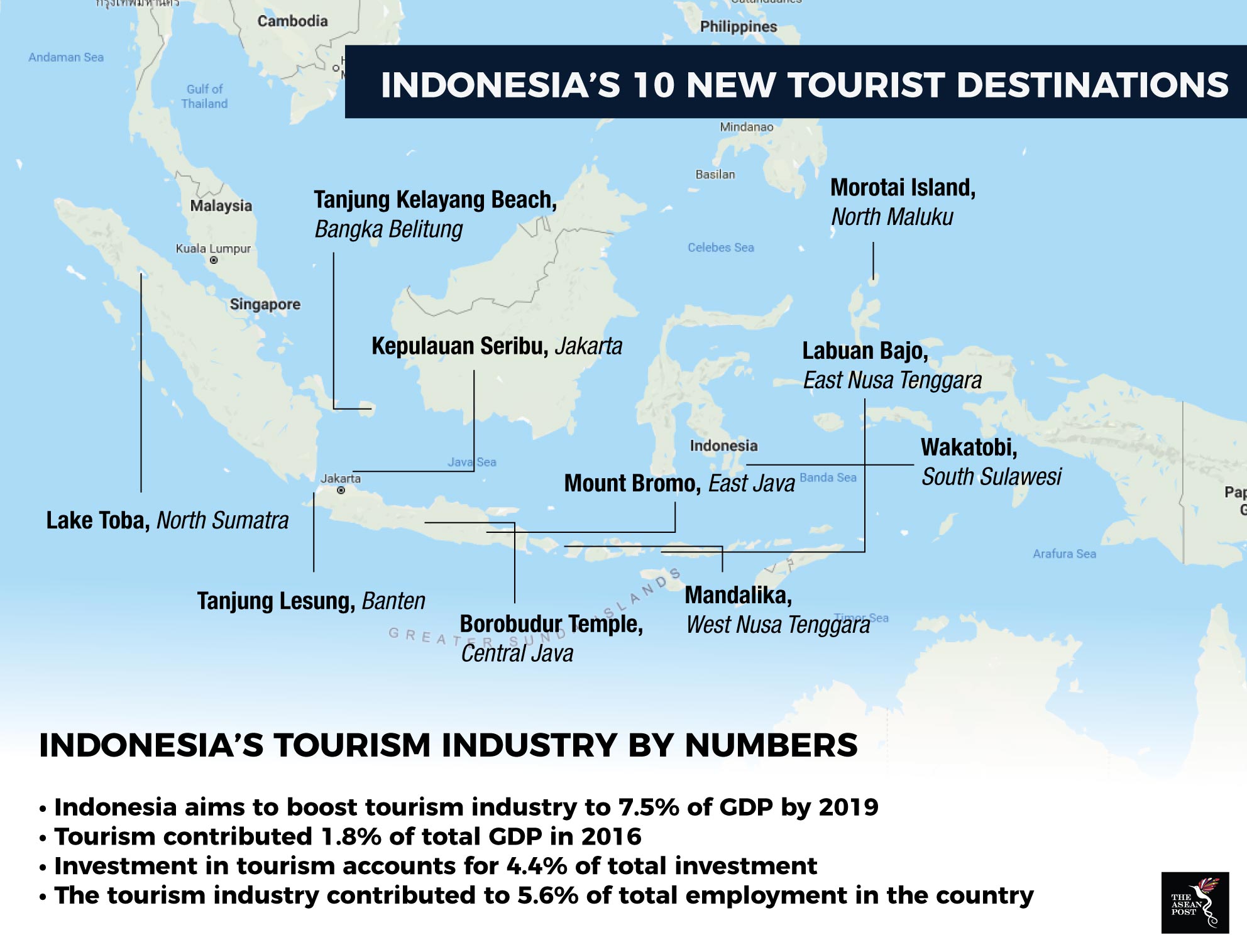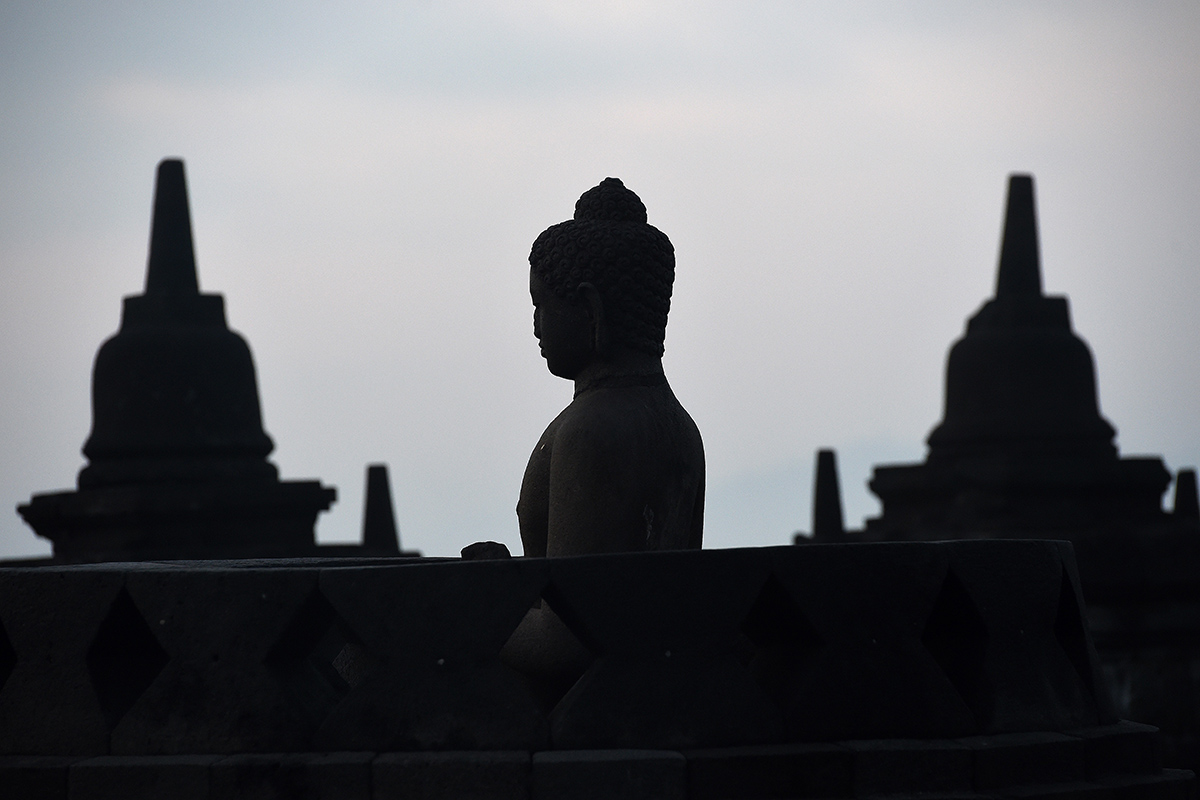Indonesia is an archipelago that is made up of over 16,000 islands, many of them with their own unique attractions from diving spots with diverse marine life, beautiful beaches with pristine waters and places with rich histories. Examples of such places include Borobudur, Morotai Islands and Labuan Bajau.
While such places are beautiful in their own right, many of them remain unknown and under the radar. Meanwhile other destinations such as Bali remain one of Indonesia’s most popular tourist destinations, bringing in as many as 4 million tourists, accounting for nearly half of the total tourist visits to Indonesia.
In an effort to put Indonesia on the map and to boost economic growth, President Joko Widodo or Jokowi is intent on creating 10 new “Balis”. Jokowi’s 10 Balis plan is in line with his ambitious infrastructure efforts taking place all over the nation. The government has identified 10 destinations that will benefit with improved infrastructure. According to the Indonesian government, with improved infrastructure in these 10 selected destinations, more tourists would flock to them and this could lead to the successful replication of Bali.
The government hopes that the development of the 10 new destinations would increase the contribution of tourism to the economy to 7.5%. According to the United Nation’s World Travel & Tourism Council report on Indonesia last year, tourism made up 4.3% of the nation’s gross domestic product (GDP). The government also forecasts that revenue from tourism will increase 60% to US$20.7 billion by 2019. The tourism industry is also a major source of jobs for the country. According to the same World Travel & Tourism Council report, tourism accounts for almost 6% of total employment in Indonesia. The number of jobs as a result of the development of these 10 destinations is expected to swell to 13 million from 11.8 million.

Source: World Travel & Tourism Council (2017)
Indonesia is also hoping to get a slice of the Chinese tourism boom. Chinese tourists already make up the bulk of visitors to Indonesia with 1.4 million Chinese visitors last year, but Indonesia wants a larger share of the Chinese market. The Chinese Tourism Academy said in a report that mainland Chinese tourists made 130 million overseas trips last year. Compounding this fact, the Chinese Tourism Academy reported that Chinese tourists spent a total of US$115 billion overseas in 2017.
While ambitions may be lofty, Indonesia needs to keep its feet on the ground and ensure their infrastructure plans go accordingly. Bloomberg reports that US$20 billion of investment over five years is needed to make this plan a reality. Among the plans to develop these destinations include building new docks, new airports, hotels and resorts. For example, Kepulauan Seribu, a cluster of 150 islands and one of Jakarta’s main hubs for marine life, needs 10 new docks by 2019 to make it accessible for tourism.
Tourism Minister Arief Yahya has already made an open invitation to Chinese investors to come in and help fund development in these 10 destinations. With Indonesia being part of China’s ambitious Belt and Road Initiative, China is a significant investor in Indonesia, ranked second behind Singapore as the country’s top investor.
However, Chinese investments alone may not be enough. Jokowi’s infrastructure plans are in jeopardy lately after several controversies. In February, Jokowi’s infrastructure project was put on hold due to a string of accidents. It is also widely reported that Jokowi could have trouble financing all 245 of his infrastructure projects. Reckoning with this fact, Jokowi is set to cancel some of his planned infrastructure projects. What will be shelved remains to be seen, but it could affect the plans of developing the 10 new tourist destinations.
Tourism in Indonesia still has not reached its full potential. For a country offering so much, it still lags behind Malaysia and Thailand in terms of number of tourists. Jokowi needs to rethink his priorities in his infrastructure projects and ensure that the projects he cancels does not affect the overall development of Indonesia’s tourism industry.
